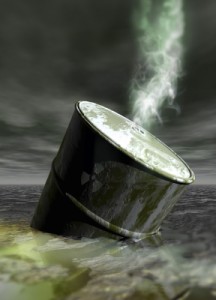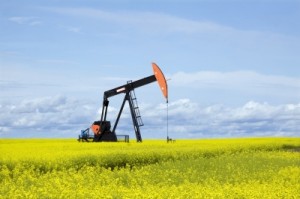Fracking, also known as hydraulic fracturing, is a horizontal drilling technique that extracts natural gas and oil from shale, a fine-grained, sedimentary rock formation made up of mud, mixed with particles of clay and minerals. The process has been around for decades, but easy access to natural gas and oil through other drilling methods made this inefficient on a large scale.
In recent years, depletion of natural gas stores and the increasing price of oil has led to an explosion of fracking operations all over the country. Today, about a fifth of our natural gas supply comes from hydraulic fracturing.
New Energy BOOM!
More than 20 states in the U.S. have sufficient shale deposits to justify investment in fracking. New York, Ohio, Pennsylvania and several other midwestern states have huge shale deposits in the Marcellus Shale formation. Right now, a huge oil and gas boom is happening in the Bakken Shale region of North Dakota and Wyoming. Another is under way in the Barnett Shale formation in Texas, some believe it holds the largest reserves off all the onshore sites in the entire country.
During our recent period of recession and unemployment, oil companies seized on the opportunity as a way of creating jobs and increasing their profits. As more of the natural gas and oil retrieved by fracking finds its way to the marketplace, consumers noticed a drop in monthly bills for heating and cooling, as well as an offset in the volatile price of oil.
Cheap, Cleaner Fuel.
The promise of fracking is that it can provide the U.S. with a cheap form of domestically produced, cleaner burning energy and can eventually be used as transportation fuel. At the current price of natural gas, it costs about half the amount of an equivalent gallon of gasoline. This means that consumers and businesses could benefit dramatically from a cheaper form of transportation fuel, while creating more domestic jobs and reducing the political risks that come with importing oil, especially from the tumultuous Middle East region.

At today's prices, it would cost you half as much to fill your car's tank with cleaner burning natural gas.
Natural Gas powered cars?
However, the conversion to natural gas for our transportation needs will take a committed effort by car manufacturers to produce natural gas powered vehicles, as well as a build out of our fueling infrastructure to support them. Fortunately, the commercial trucking industry is already leading the way due to the huge, potential cost savings associated with fueling their truck fleets with natural gas.
Despite the immediate economic benefits and huge potential, questions about fracking’s possible harm to the environment and human health have been raised..
At the very least, the process can be called somewhat risky. Water mixed with sand and chemicals is injected at extremely high pressure into shale deposits deep underground, fracturing the rock and releasing natural gas. The gas is then piped to the surface where it is collected and refined.
What happens to fracking fluid after use?
Some operations use concrete to seal the fluid in underground wells to keep it from leaching into aquifers and the water table. How long the concrete remains effective is not yet known. Shale is not the most stable variety of rock, either. What happens when it shifts?
Other operations retrieve the used fluid, contain it and ship it to states with approved storage areas in much the same way that other toxic materials are contained and stored. Do we have enough safe storage areas for the spent fracking fluid?
Water hog!

Is fracking safe?
Next, it takes an incredible amount of water to fracture rock. Multiply millions of gallons of water per well over months of operation and it’s clear that fracking uses a tremendous amount of water. Fracking now takes place near many populated areas that need reservoirs and aquifers for drinking water. Demand for clean water is not falling, it’s climbing.
Shakin’ it up.
Finally, the high-pressure injection techniques used in fracking may be causing earthquakes. More study is needed before it can be asserted as truth, but many areas of the U.S. once considered geologically stable are now experiencing tremors. Is it coincidental that fracking is going on in these areas?
These important questions do not have easy answers or solutions, but one thing is clear. Fracking can provide the US with a huge opportunity to get one step closer to energy independence, while providing cheap, cleaner burning fuel and the potential to boost our economy with lots of new domestic jobs to support the oil and gas industry.
The effort to get to all the oil and gas in these shale formations will take billions of dollars and thousands of well sites to be drilled in the coming decades. It looks like the industry has the will and motivation to take on this enormous task. However…Can we do it safely?


Leave a Reply